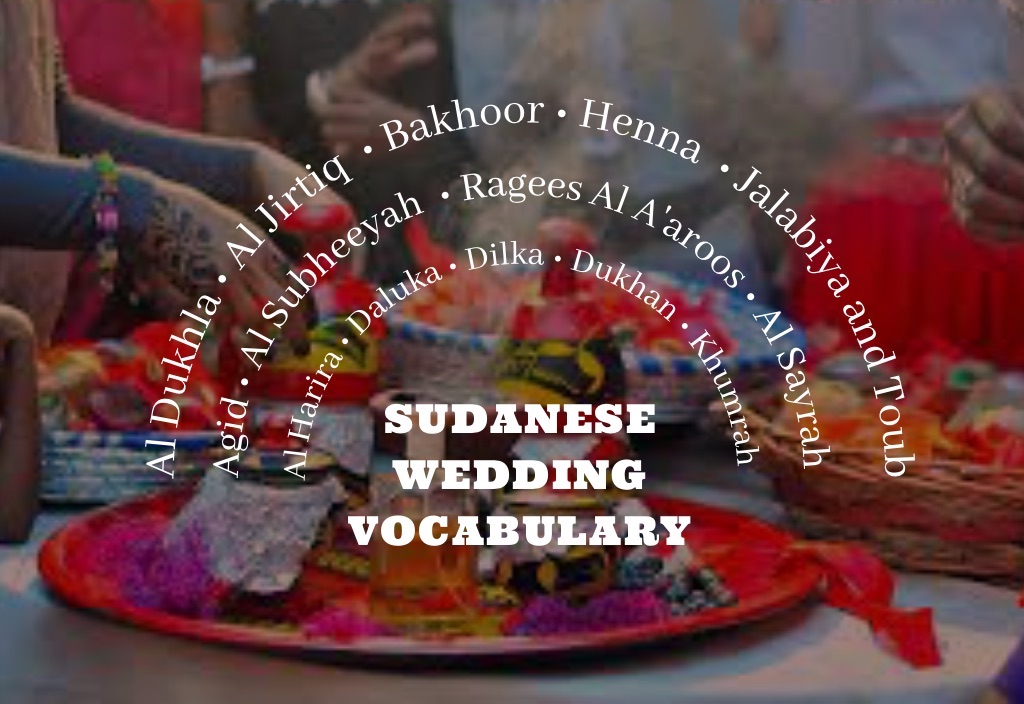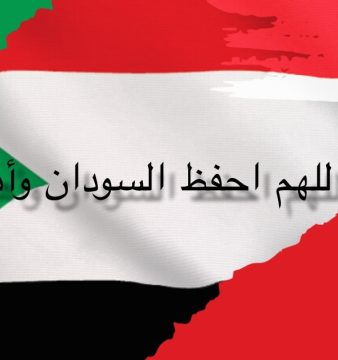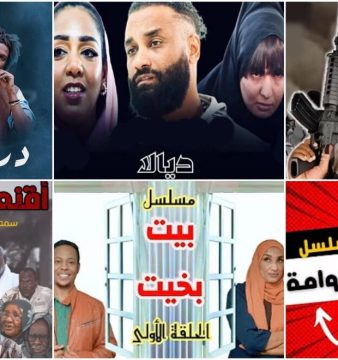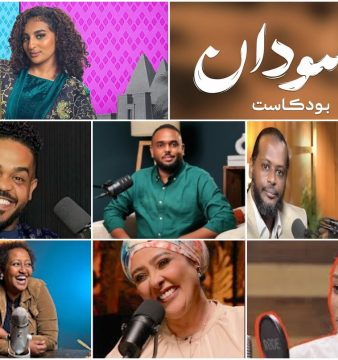Sudanese Dialect Guide – Wedding Edition

Visiting Sudan for a wedding? Make sure you know the wedding vocabulary!
Agid عقد
It is when the bride and groom are united in marriage in the eyes of God. An imam or priest takes their vows in attendance of their loved ones. It usually takes place in either a mosque if the couple is Muslim or at a church if the couple is Christian. However, at times, the mazoun, a Muslim cleric who authorises marriages, may be brought to the venue to conduct the union. It is usually a small, intimate event that takes place before the wedding. Dates, sweets and drinks are given out once the marriage contract is signed by the couple, and it may be followed by lunch or dinner. In Arabic, agid means ‘contract’. According to Islamic law or Sharia, the bride must have a wali or custodian such as her father, uncle or brother present to sign the marriage contract as well.
Agd Al Someet عقد السوميت
•عقد #السوميت:
— ثقافة سودانية (@SudaneseCulture) September 19, 2015
عقد مكون من حجر كريم بطرفه قطعتين من الذهب,يستخدم في طقوس #الزواج_القليدي في #السودان(#الجرتق)#Sudan pic.twitter.com/COwsDrb4eT
A necklace consisting of a precious black (or dark brown) and white stone with two pieces of gold on a necklace chain of red rope. It is worn by the groom during the traditional wedding ceremony, Al Jirtiq. The groom wears agd al someet along with a red and black wooden bead necklace, which is known as sibha, the Islamic prayer beads.
Al Dukhla/Al Zafaf الدُخلة / الزفاف
The wedding day or ceremony where the bride and groom invite their loved ones to celebrate their union. Like in the West, the bride commonly wears a white dress and the groom wears a black suit or tuxedo, and are accompanied by bridesmaids and groomsmen. It takes place at a wedding hall with live music and dinner. A Sudanese wedding can have up to around 2,000 people in attendance. The wedding ceremony takes place after the Agid and is usually followed by Al Jirtiq and Al Subheeyah/Ragees Al Aroos.
Al Garmasees القرمصيص
Also known as al firka or firkat al garmasees, al garmasees is a fabric that is unique to Sudan, commonly worn as a veil by the bride during the traditional wedding ceremony, Al Jirtiq. The rectangular silk fabric or cloth is plaid-like in pattern, featuring a variety of stripes of red, yellow/gold and blue. The frame of the fabric may be decorated with dangling golden coins.
Al Harira الحريرة
A red silk ribbon with blue beads that is worn on the bride’s and groom’s head/hair during Al Jirtiq as a ritual to protect the newly weds from ‘evil eye’ and envy. It is coated with scented herbal/natural oils and spices.
Al Jirtiq الجرتق
A special Sudanese wedding ceremony where the bride and groom take part in a wedding ritual, wearing traditional Sudanese clothing – the bride wears a red toub and the groom wears a white jalabiya or two-piece Sudanese clothing called Alal allah with a red ribbon and gold crescent around his head. Sitting on a traditional Sudanese bed called angareb towards the direction of the Kaaba, the couple is surrounded by the closest relatives as they place al harira and other jirtiq items on the bride and groom. The bride and groom participate in ritual practices such as sipping milk, passing dates, sprinkling khumra (Sudanese perfume) and throwing sweets at guests, and more. The act of tying a crescent of gold on the forehead is called Jirtiq. Al jirtiq may also take place in the occasion of a circumcision.
Al Kashf الكشف
A fundraiser; a common practice in Sudanese culture where a person or people financially contribute to a loved one’s special occasion such as a wedding or funeral.
Al Sayrah السيرة
It is a traditional celebratory practice where the groom’s family (mostly or commonly women) move together in a bus or a group of cars singing and dancing to the house of the bride’s family on the wedding night. It could also take place by foot if the distance is close especially in villages and rural areas.
Al Subheeyah الصبحية / Ragees Al A’aroos رقيس العروس
A small celebration takes place the morning after the wedding night. It is also known as Ragees Al A’aroos or the bridal dance, which is an optional traditional wedding ceremony where the bride dances to traditional Sudanese songs or daluka songs to a commonly women’s only audience. This sensual occasion is usually private and by invitation only where the bride performs on a stage or dance floor in a variety of relatively revealing attire in intervals as the audience cheers her on. Her husband may be in attendance.
Bakhoor بخور
Common throughout the Middle East and North Africa (MENA) region, bakhoor is processed wooden incense chips that is vastly used to perfume homes, party venues, offices and other spaces. Bakhoor is an Arabic word, which means fumes. Sudanese bakhoor is sandalwood incense that is unique, soaked in aromatic perfumes and essential oils (spice and floral oils) using age old traditional recipes passed down generations. It is traditionally made with sandalwood that is broken down into small chips, which are later placed in a hot pot to soak in sugar, lime, soaked clover, musk, sandalwood powder, fragrance oils and perfumes such as khumra.
Daluka دلوكة
A unique Sudanese drum made from animal skin and clay. It is believed that the instrument originates from Darfur, spreading to the rest of Sudan through trade. It is commonly used by women when performing at special occasions (usually women’s only occasions). Songs performed with the daluka are called ‘daluka songs‘, also known as aghani banat or ‘girls music’, which are upbeat and danceable songs that are usually sung by and for women.
Dilka دلكة
A traditional Sudanese body scrub used by married women and brides to exfoliate their skin. The dry yet soft scented scrub that is made of various natural ingredients mixed with cornmeal, and scented oils and a combination of well-known french perfumes. It is also smoked or steamed in ‘dukhan’ for a period of time.
Dukhan دخان
A traditional Sudanese beauty ritual also known as a smoke bath where brides or married women sit over burning wood of perfumed acacia wood and sandalwood known as talih. A woman sits unclothed but robed on clay pot, which is dug underground or placed above the ground with coal burning the wood inside. Like being in a sauna and steam room, the smoke surrounds her body for as long as she wishes. Commonly used as a form of a beautification treatment, dukhan may also be used to ease rheumatic pain, smoothen skin, treat wounds and achieve body relaxation.
Gona قونة / Gonat قونات
A female party singer who commonly performs upbeat and danceable ‘common’ music, leading a band with her vocals and lyrics, and occasionally dances. The singer performs on small, private special occasions that usually take place at a home. Similar to rap and hip hop beefs or feuds, gonat (plural) commonly participate in feuds, which are expressed through attacks in lyrics.
Henna حناء
Like many other cultures in the Middle East and North Africa (MENA) region and Asia, henna is popular in Sudanese culture especially in the occasion of a wedding. Prior to the wedding ceremonies, a henna party takes places – one for the bride and one for the groom. It is a small, intimate occasion with only close relatives and friends who sing and dance as the bride or groom have henna applied on their bodies. Guests may also apply henna if they wish.
Sudanese henna is most commonly black henna, which is made by mixing para-phenylenediamine (PPD) with henna, a natural, plant-based dye. Although generally popular and safe, it is known to be poisonous and cause severe skin reactions. Other forms of henna is a based on the plant itself without PPD and dye. Although it is not black, it naturally becomes a dark shade of brown.
In Sudan, henna is also applied on men, but only during weddings and on young boys once they are circumcised. However, men’s henna is basic without a design. It is simply pasted on their hands and legs to leave their hands in legs in a dark shade of brown, nearly black.
Jalabiya and Toub جلابية وتوب
Jalabiya is a long garment that Sudanese men wear. The everyday wear is usually white or off-white, but can also be in other shades of grey, brown or beige. It is light and soft, and usually worn with special undergarments. It can be embroidered for special occasions.
Toub is a 4-meter one-piece wraparound garment that traditionally only married women wear. The everyday wear is worn using a unique draping technique. It is colourful and can come in many fabrics such as chiffon, viscose and georgette. It can be embroidered, dyed or painted on for special occasions.
Khumra خمره
Khumra is traditional blended Sudanese perfume that usually only married women wear, specifically brides. It is often made by families, friends and neighbours in communal gatherings, using recipes handed down through generations. The making of khumra or ‘dag al rihah‘ is one of many of Sudan’s wedding ceremonies. It includes mahlab, cloves, and sandalwood (sandal) sticks, mastic gum (masik), sandalwood oil (sandalia), karkar (hair growth oil), al zeit, dilka, dukhan and a selection of international branded perfumes popular in Sudan and the Middle East. The word khumra comes from the same Arabic root, ikhtamara or khammara, which is to ferment.
Toub Al Surrati التوب السرتي
•التوب السرتى
— ثقافة سودانية (@SudaneseCulture) April 4, 2015
(جلابية)من القطن مزينة بخطوط حمراء,يرتديها العريس عند الجيرتق(من أهم طقوس #الزواج_التقليدي في #السودان) pic.twitter.com/nUbgaFWLtY
An off-white toub with thick and thin red or maroon stripped borders. It is traditionally worn by the groom crossed over his jalabiya during the traditional wedding ceremony, Al Jirtiq.
Related posts:




